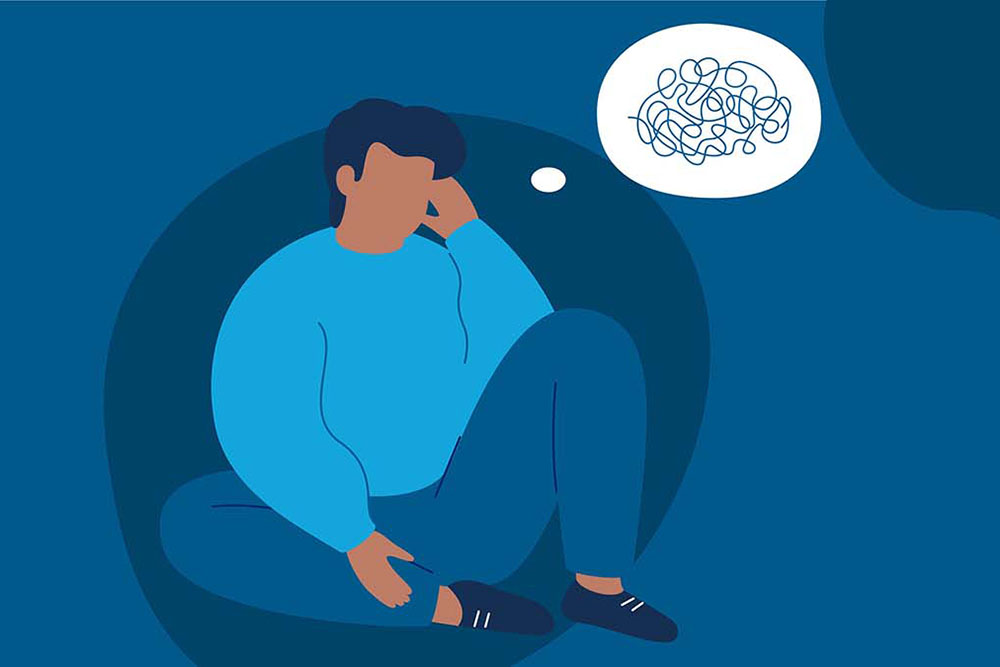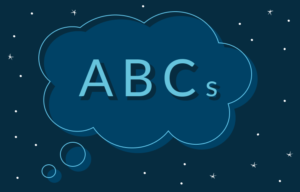So here I am. I am in the wrong room of the house for this time of day. I should be in my office; instead I’m lying in bed. But you can tell I’m either delusional or hopeful, because I brought my computer with me. We all have phases we go through before finally realizing we are doing everyone more harm than good by trying to work through a particularly bad migraine attack.
I don’t like assigning a number on the pain scale to a migraine attack that forces me back into bed because there are so many more symptoms in addition to the pain. Not only that, but what was a 10/10 years ago might be an 8 now. Or, for those of us lucky enough to be continually improving, what feels like a 9 to us now was previously known as our level 6. I just like to refer to these as “bedridden migraines.” I have some strong personal beliefs about this type of migraine. I believe the entire job of a “bedridden migraine” is to take your mind and your mood down a rabbit hole. Once it has your mood and your mind, migraine can self-perpetuate. This happens because depression and anxiety tend to travel hand in hand with migraine, and they help migraine thrive1.
Don’t get me wrong, you should be resting and taking care of yourself. In bed is where you belong at this time. But this also means that you are likely alone and in a dark room. Be vigilant. This is where the migraine wants you. You can think of migraine as a living, breathing thing. Migraine wants to survive, it wants to perpetuate itself. Migraine wants all the conditions correct so it can take your thoughts into a downward spiral.
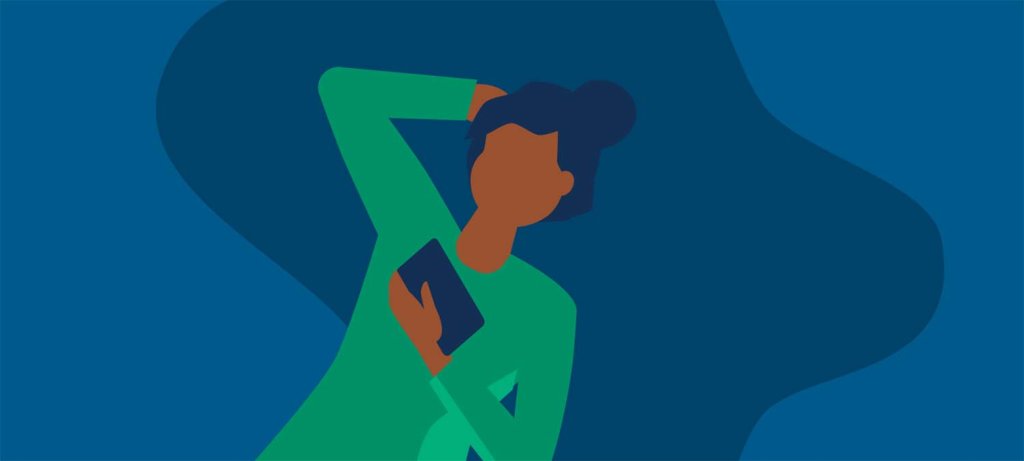
It matters where you let your mind wander
You know those people who are always trying to tell us that if we thought more positively, we wouldn’t be living in chronic pain? I have to wonder how much pain those people have actually experienced and for how long a period of time.
I personally feel that this message is very oversimplified. As someone who has experienced a lifetime of chronic (sometimes daily) migraine and complex regional pain syndrome, I am definitely not telling you to smile your way out of chronic illness and into perfect health. Even worse, I sometimes hear people blame our pain (or our migraine) altogether on negative mood, or some sort of innate inability to control our thinking. No, your migraine does not exist because you failed to practice adequate mental hygiene. I always like to say that it is not our fault that we got here, but we need to use our mentality and thought life to get out.
No, your migraine does not exist because you failed to practice adequate mental hygiene.
Thoughts are literally nerve signals. They are just as real as the pain you are feeling. Your thoughts are chemicals and nerve impulses that are released in your brain. So is pain2. Each thought you think affects your pain state, and it affects the state your mind will be in once the migraine subsides and you are ready to get back to your routine. It even affects your future when it comes to migraine. Have you ever heard anyone say that migraine makes more migraine? This is one of the reasons.
Your brain feels the effects of your thoughts in the same way you feel your pain. Your thoughts and your pain state cannot be separated from each other. The limbic system, the part of our brain that is responsible for emotions and behavior, is intertwined with our pain centers. These two parts of our brain cannot operate entirely separately. If you had a terrible day at work and you hit your head getting into the car, it hurts WAY worse than if you’re goofing off laughing with your friend and the distraction causes you to injure yourself in the exact same way. What does all this mean for us? Once we have exhausted our armory for keeping the migraine at bay, we need to shift our focus to keeping our mood up and our thoughts as realistically optimistic as possible.
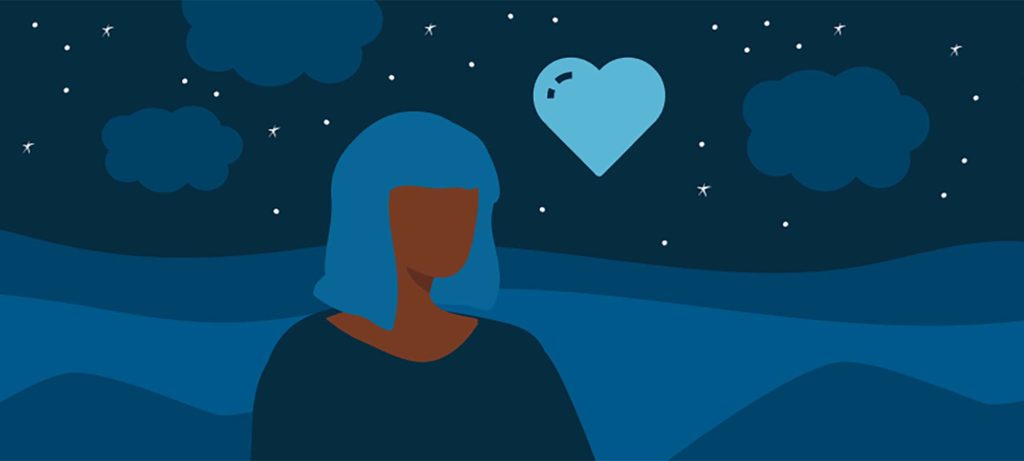
Let’s look at some data and discuss some tricks we can use in these situations
“Threshold and magnitude” of our pain experience are “modulated by mood and attention”3. It is also modulated by expectations4 related to our previous migraine experiences. Whether you realize it or not, as you lie there trying to get through your migraine attack, your brain is actively pulling information related to your past migraine experiences, your values, and your expectations around migraine and pain to help determine what and how you feel5.
I like to imagine my brain taking all that overwhelming pain and other symptoms caused by the migraine itself, and matching this information to previous migraine attacks I have had (location, throbbing vs burning, fatigue, confusion, how much nausea, how much vertigo, etc.), then mixing this information with my current state of mind in order to decide just how bad everything should be…sort of like a witch’s brew.
Scientific research has proven that certain thoughts will chronify pain. Psychologists call these “thinking errors” or “dysfunctional thoughts,” but I like to think of these as “thought viruses.”
One of these is thinking that your pain is dangerous. In other words, thinking your pain means there is something seriously wrong with your body2. Also, thoughts that you are a victim, or that the pain will never go away are particularly detrimental2. But if your migraine symptoms are frequent and/or severe, a lot of these thoughts may happen automatically. It takes work to turn them off, and practice to keep them from starting and staying.
If you can make it through a severe migraine attack without hearing yourself think “I’m going to die,” you have much more control over your pain thoughts than me. This thought goes through my head every single time I’m stuck in bed with a severe migraine. But once I notice this thought, I immediately turn it around to “I’m getting better” or “my nervous system is getting healthier.”
Specific to migraine, one study found “worrying too much about different things,” “not being able to control worrying,” and “trouble relaxing” were traits that were significantly related to migraine chronification and pain level in a dose-dependent manner1. Why do I bring this up? Because how often do we lie in bed and worry about what our boss and coworkers are thinking? Or how we are possibly going to make up the work we are missing? Some people worry about what their family members think of them, or if they are losing friends by missing out on the fun times.
All these thoughts make our migraine, our pain, and our life in general worse. One of my favorite sayings is “Worrying is like praying for what you don’t want.” In the case of migraine and anxious thoughts, this is the absolute truth. The fact that 50% of people with migraine have anxiety, and that depression is 2-3 times more prevalent in people with migraine might make this particularly difficult for us6. Our brains are wired to focus on the wrong thoughts. This tendency is strongest when we are in pain. We need to rewire our brains.
Worrying is like praying for what you don’t want. In the case of migraine and anxious thoughts, this is the absolute truth.
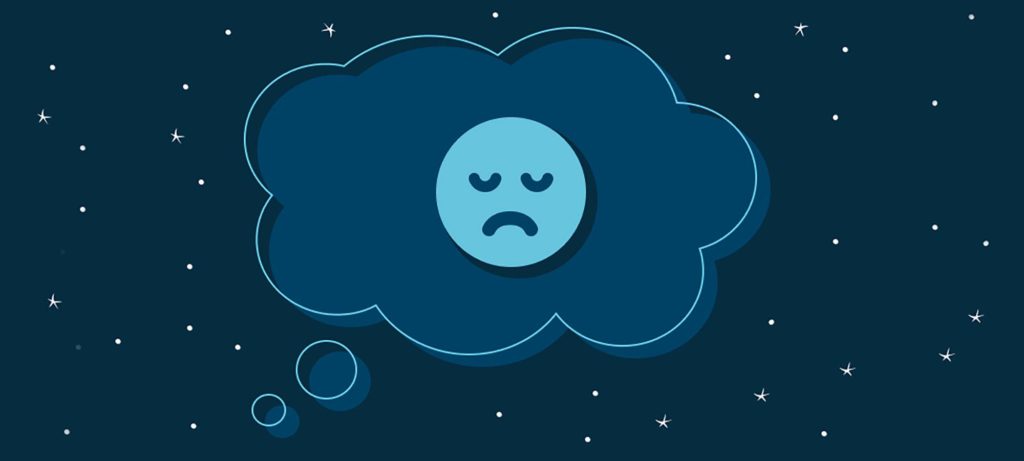
Giving yourself the credit you deserve
Think about how you would describe your pain and other symptoms during your worst migraine attack. Nausea, vomiting, and dizziness aside, when my neuropathic pain and migraine were ever-present and at their worst, I used to say that it was like the upper half of my body was trapped beneath a steel-spiked tractor; then someone came along, dowsed me with gasoline, and set me on fire.
Your personal tractor or (insert your pain metaphor here) is invisible to everyone but you. But think about it, YOU ARE FEELING THIS EXPERIENCE. Although you are not developing the physical wounds from it, it is just as emotionally and mentally scarring to you as if it were actually happening. If in reality I had survived thirty years of being trapped under a tractor and set on fire, how do you think people would behave toward me? They would probably praise me every time I was in a good mood or accomplished anything at all instead of dismissing any emotional or physical anguish I felt from my pain.
For this reason, it is important that as people living with migraine, we embody the hero mentality. We are survivors. We should never come out of a migraine attack feeling weaker, victimized, or marginalized. Yet this happens so often! (This is called internalized stigma). Our goal, for both our physical and mental health, should be to come out of even our worst migraine attacks mentally and emotionally stronger, with pride in ourselves for what we have overcome.
So how do we accomplish this?
Here are some suggestions for keeping your mind in a good place when the pain and the migraine are trying to take over. The key is to try to only allow positive, happy, empowering, and even funny vibes around you. It won’t be easy, and you will have to keep checking in on the negative thoughts that sneak in on their own. Here are some examples to get you started:
Banish these thoughts from your mind during a migraine:
- “I’m lazy, I should just get up.” (Don’t question whether you belong in bed, you wouldn’t be there if the alternative wasn’t too much.)
- “This always happens at the worst time.”
- “Why me?” (This one just takes you straight down the rabbit hole, don’t go there.)
- “I could be / have / do so much more if I weren’t affected by migraine.”
- “My family, friends, colleagues, boss are disappointed in me / think I’m lazy / think I’m faking,” etc. In fact, banish all thoughts of what other people think of you and focus on extending love to yourself – see how that makes you feel.
- “I’ll never be able to perform up to my potential.”
Think these thoughts instead:
- “I managed to do a lot before I lay down, considering how I was feeling.”
- “I am such a strong person for living with migraine.”
- Keep a running tab of all your good qualities and life accomplishments – run through it and remember that you’ve done these things as a person living with migraine.
Do these things:
- Keep a list of empowering movies to watch or listen to (depending on your ability) to keep you feeling empowered instead of like a victim.
- Notice how many of your thoughts are about what other people are thinking of you. Learn to think only loving thoughts about yourself.
- Have a list of funny movies to watch/listen to for when you start to feel down. Laughter will help you keep your spirits up. Even if you are in too much pain to laugh outwardly, you can laugh on the inside.
- Keep a “migraine playlist” if your phonophobia is not too bad. Have relaxing or happy music available to flood your brain with.
- An active migraine is the perfect time to do full body relaxation meditation. This can be done on your own or with a guided meditation on your phone.
- Pick a breathing technique that helps you. I personally like “box breathing.” (Breathe in for four seconds, hold for four seconds, breathe out for four seconds, hold for four seconds, repeat).
- Listen to uplifting or funny podcasts.
- If you are experienced at meditation, you may want to meditate with an app or on your own. An active migraine attack is not a good time to begin learning meditation.
- Bring a piece of paper with you and write a gentle to-do list for when you move from “bedridden” to “functional.” This may help you feel more capable and in control of your life. If it makes you feel more anxious, do not do it.
- Use a biofeedback app like Juva.
- Color. I know so many people who love to color during a migraine. It is a great distraction. Order a coloring book on Amazon and go for it.
- Listen to an audiobook. (This may require too much attention for some people, some people love it).
Come up with some strategies that are unique and personal for you. Plan before an attack happens so you will be ready with these strategies. If you would like to practice this with a professional, you may want to try Cognitive Behavioral Therapy. The more we practice turning our thoughts around, the easier and more automatic it gets. The easier it gets, the healthier our brains become. Wishing you all the happiest thoughts possible even if you are stuck in bed.
Juva Health: Biofeedback for Migraine
The Juva Health app teaches you migraine progressive muscle relaxation along with other science-backed migraine relaxation, stress management, and CBT techniques. Using unique technology, Juva makes it possible for you to learn and practice biofeedback for migraine prevention at home. The Juva app uses your phone’s technology to help make you aware of your bodily functions, like heart rate and respiratory rate.
To get access to the best relaxation strategies for migraine, including progressive muscle relaxation, sign up for a free year of Juva Health today.

References
1Peres MFP, Mercante JPP, Tobo PR, Kamei H, Bigal ME. Anxiety and depression symptoms and migraine: a symptom-based approach research. J Headache Pain. 2017 Dec;18(1)37.
2Butler DS and Moseley L. Explain Pain Second Edition. Adelaide, Australia, Noigroup Publications, 2013.
3Bushnell MC, Ceko M, Low LA. Cognitive and emotional control of pain and its disruption in chronic pain. Nature reviews. Neuroscience. 2013;14:502-511.
4Wiech K, Vandekerckhove J, Zaman J, Tuerlinckx F, Vlaeyen JW, Tracey I. Influence of prior information on pain involves biased perceptual decision-making. Current biology: CB. 2014;24:R679-R681.
5Baliki MN, Apkarian AV. Nociception, Pain, Negative Moods, and Behavior Selection. Neuron. 2015 Aug 5;87(3):474-91.
6Buse DC, Silberstein SD, Manack AN, Papapetropoulos S, Lipton RB. Psychiatric comorbidities of episodic and chronic migraine. J Neurol. 2013 Aug;260(8):1960-9.
